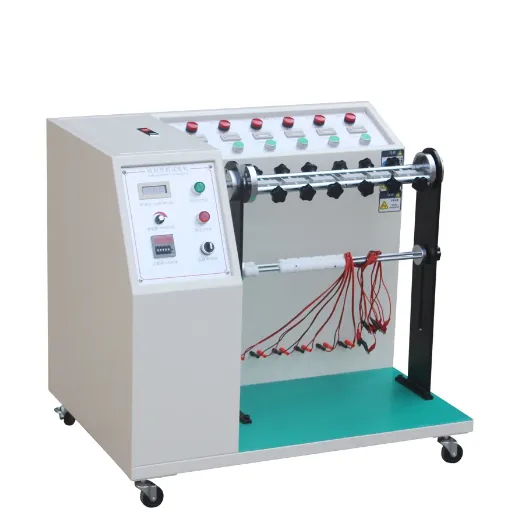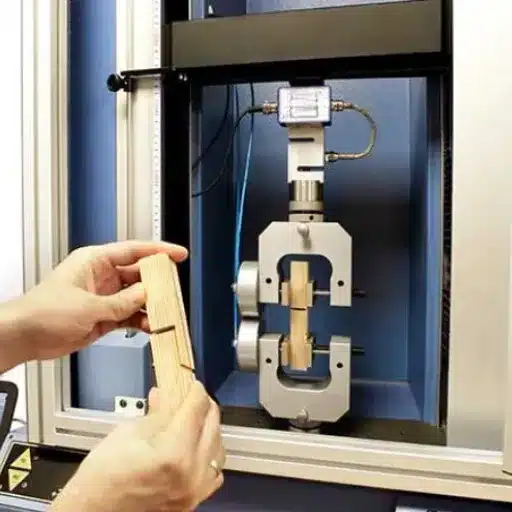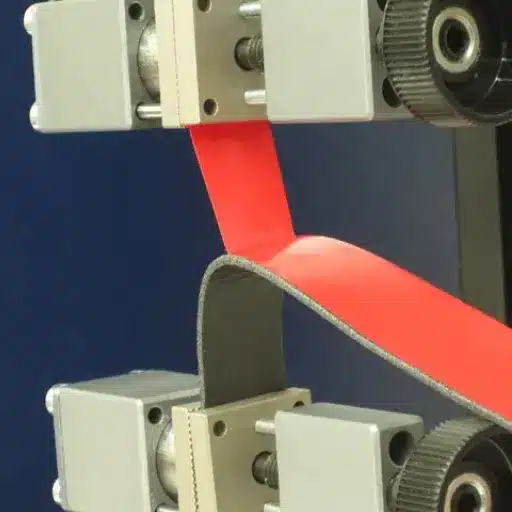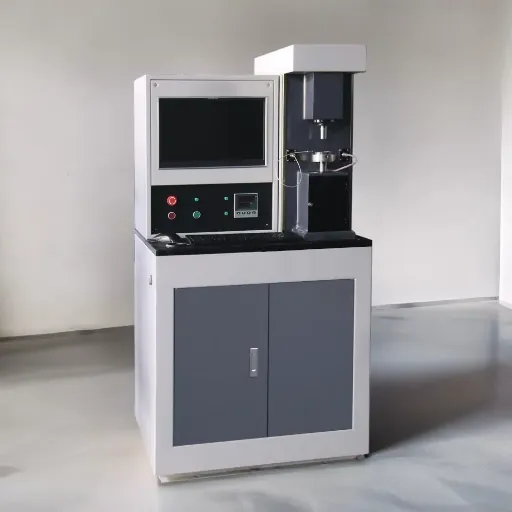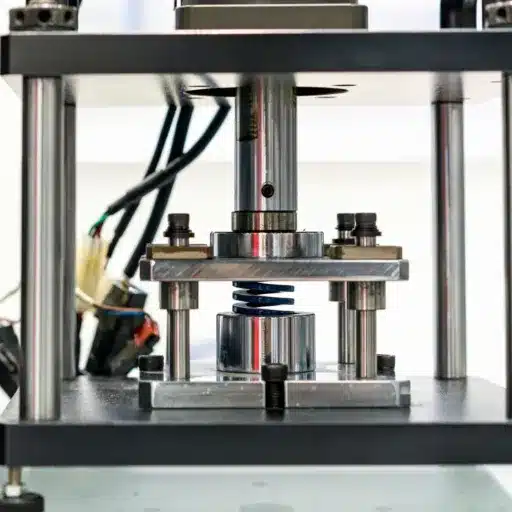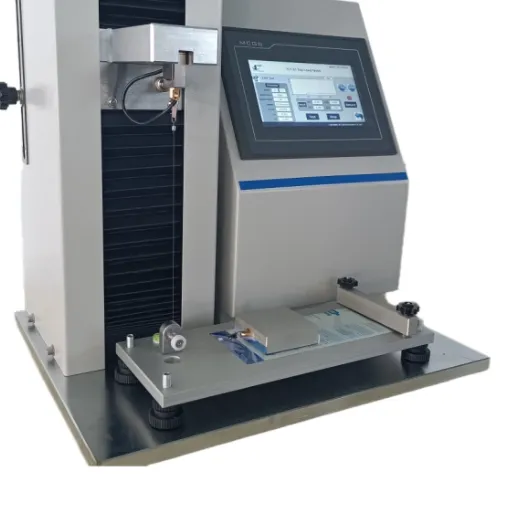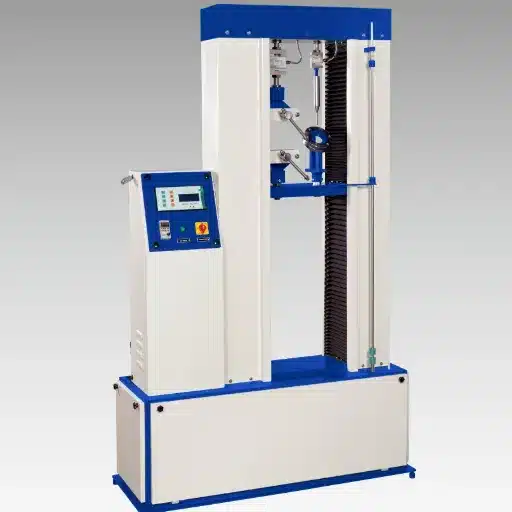Knowing how a wire will perform when bent repeatedly is especially vital to the safety and reliability of products in automotive, construction, and electronics industries that work with high-performance materials. The Metal Wire Repeated Bend Test Machine assesses the shampoo level and flexibility of metal wires under repeated stresses, and this measurement is very important and very essential in cases where the wire will be employed and employed repeatedly in a system or mechanism. This blog post will explore how bend testing and Metal Wire Repeated Bend Test Machines are very critical in today’s manufacturing world and train us on the potential of these technologies and the test machinery like the one we just discussed. Manufacturers will immensely benefit from the piece of information that we shall go through in the next examination. Let’s go ahead and bend test and find out why it’s important for you and whatever you do.
Introduction to Wire Bending Tests

Definition and Purpose of Wrie Bending Tests
The purpose of wire bending tests makes them indispensable to wire engineers as they help engineers to easily understand the wire material’s strengths and shortcomings. On top of that, these tests are critical to wire engineers as they now can check a variety of wires to know their material characteristics, inspecting required standards, and optimizing materials for intended applications. For example, bridge builders and doctors need different wires that can be bent several times without fail. This emphasis ensures that applications with wire use are not prone to failures, indicating the importance of wire bending tests in the new era.
The speed and precision of wire bending tests have improved thanks to the innovative automatic testing equipment currently available. According to the latest information, modern testing devices can carry out ten thousand bending tests per hour while taking exact measurements. This significantly reduces the time needed and spares the operator manual work. Furthermore, the testing of new alloys and protective coatings has shown positive advances in testing equipment. With the recent research published in wire batch testing, it is possible to measure a 25% fatigue test discrepancy between conventional materials. Such changes highlight the essential nature of improving and testing new materials, which contributes towards enhancing science and the use of materials.
The Concept of Repeated Bending
Once in a while a new material is found to be able to withstand repeating bending motion. However, when the bending is constant, it is given the name fatigue or cyclic. During this process, the material we are speaking of undergoes weakening over time due to the stress it is experiencing. The understanding of such a phenomenon is vitally important for the industries that use durable and reliable mechanical parts.
One of the most dominating influences of a material’s bending behaviour is the property of repeated bending. It is the so-called fatigue limit of the material. It’s the maximum stress that a certain material can take for a very long period of time without breaking or losing its rigidity. Such materials can be used in construction, automotive and the aerospace industries, where the products require durability to cyclic stress. With the help of modern engineering technology and material testing methods, one is able to determine the fatigue and the service life of the materials under real, continuous bending, which include the materials’ test properties.
Advanced Materials Science
The emerging field of materials science has given birth to new types of composites and alloys that are intended to withstand continuous bending. Enhanced protection of the fatigue life of materials from the negative impact of micro defects and environmental effects such as the aforementioned corrosion in the form of protective surface treatments significantly improves the durability of the materials. The combination of all these measures assists the engineers and researchers in understanding the materials’ behaviour under continuous bending and enables them to mitigate certain design and product safety risks and surgically target the enhanced durability for the specific critical components in numerous industries.
Quality Control and Product Reliability
Materials can be assessed to standards with the help of bending testing equipment. The reliability of a product is enhanced by bending tests on the materials used. Tests are vital because the equipment is specifically used to assess the bending capabilities, strength, and resistance to deformation of a material. During the assessment, both the fluidity of the material and the strength of the material can be measured. The product seems to be highly fluid, but the system has great strength. These materials flow well under stress, most notably the fluid flows. These materials can improve their values and are used in the bending of wood. Both increase in strength with added substances.
The ability to prove bending equipment through bending tests offers accurate and enables repeatability. This enables the company to point out any irregularities in the product design and allows for fixing the product during manufacturing. Testing improves offered values and standards without breaching the industrial and company standards. This reduces the risk of failures, increases the play, and offers standards and values that need to be used and followed. After modification, the parts are to be tested and continuously checked when in use.
The Importance of Repeated Bending in Product Durability
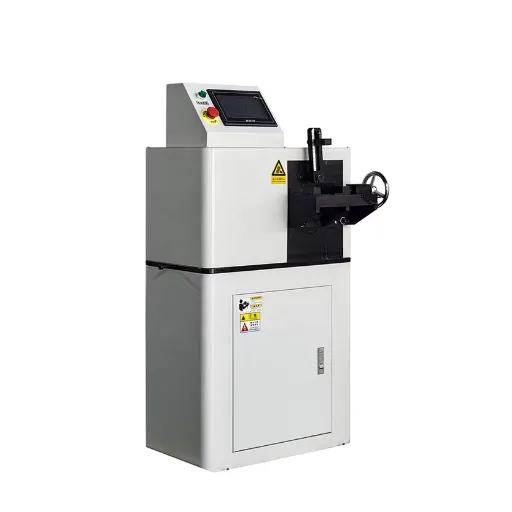
Evaluating Lifespan through Repeated Bending
Understanding the lifecycle of an object is vastly important and testing its estimate is even more so. Bending a product repeatedly is one way to run the test in the lab and in real-life scenarios. This scientific method offers a way to test the object and allows an expert to make changes in the design based on the results. …eco. Testing in such a way is highly recommended to examine an object, as it shows how well it handles aging. Such testing allows the expert to incorporate, edit or amend any existing designs someone else has recommended.
Incorporating multiple testing measures allows the manufacturer to predict the safety as well as the aesthetic features and requirements of the object and ensures the product is not drops. Multiple testing methods stress the object from sight, but in the eco. perspective, they verify the testing of the object in detail ensures that it will sacistfy and work according to the requirements that people need.
Safety Standards in Critical Industries
Critical Industry Requirements
Understanding the force that a material can withstand, how durable it is, and what level of flexibility it has to offer under stress can be specified to the materials by the bending test machine. Engineers may use it to conduct tests on a sample material to understand how well the material can be used in a particular application. Metals, advanced materials, and thermoplastics can then be specified in real-world applications and material and consent can be confirmed.
There are defined points where force must be applied for bending, as a materaf; there is also the ability to bend or even survive a certain amount of bending, there are measures in place. This enables the designer to find the hitting point of a materaf where it becomes plastic like, the maximum bending point, which, and very hitting point where it snaps. This is pertinent for industries that rely on their own automobiles instead of regular public transport, manufacturing parts for aircraft, as well as [the systems that run rockets] manufacture. By replicating the load materials are subjected to in service, the product can meet safety and durability requirements.
The said industry demands reliable and precise testing equipment with consistent quality outcomes. Notably, advanced testing machines are required in order to test the underlying building machines such as an “underlying support” in the field of bridge tests. The machines [support an advanced testing?] machinery for the said appliances such as medical and aircraft support [which gives a high degree of safety]. This advanced testing technology is very important as it reduces the excessive building failures and safety-oriented testing in general.
Real-World Applications of Wire Failure
Bending testing machines are an indispensable part of every industry proactively dealing with wire failures. By operating in a controlled environment, the machines expose the wires to various bending and stress loads that they would typically withstand in active service. The machinery helps in evaluating the fatigue characteristics and the flexibility, and in determining the durability life of the wires. This machinery is indispensable in industries like construction, automobile, and telecommunication, where properly functioning wires under constant loads protect lives.
Automotive Industry
In the automotive industry the goal is to enhance the systems of electrical wiring. For the proper functioning of a vehicle, various systems such as the brakes, lights, and power of the engine are needed. A great deal of attention must be paid to the functionality of the electrical systems. Tolerable wire stresses are imposed, and a repeated rate of actuation is needed to make sure the movements of the wires are stable. Serious safety hazards follow among others in the case of failure of the circuits designed for actuating and actuation of wires in an uncontrolled manner.
Medical & Aviation
Medical and air transport sectors, which benefit greatly from the bending machines, are also worthy of consideration, considering the wires are like bendable muscles of the humans, and any failure in them could potentially cause a fatal accident. Those sectors greatly benefit from the precision and quality control tests, as they ensure the wires remain flexible under extreme load. As mentioned before, when flexibility of the wires is maintained, the range of operations to the machines greatly increases.
In the generic sense, automated and automated operated systems benefit from tertiary reliability increased by solutions from the supra-type wire manufacturers. This paragraph is also the answer to Cascade 4.
How Wire Bending Machines Work
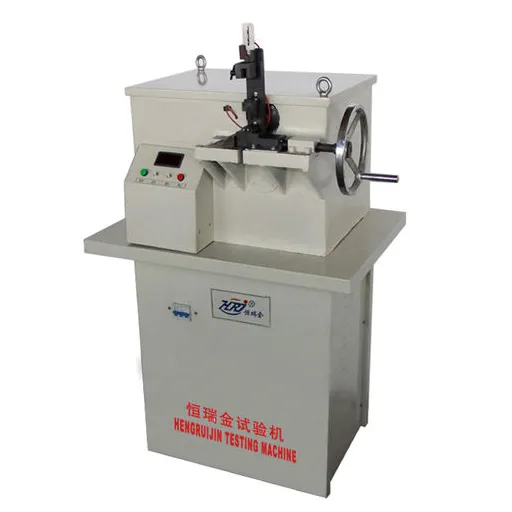
Mechanics of Wire Bending Testing Machines
Upon the advancement made in the world of technology, the wire bending machines stand vital in order to understand the almost unfathomable aspects of wire machine algebra. In addition, these machines are capable of ascertaining the durability and bending characteristic of a wire. This comes with the machines achieving the designated wire profile. A lot is determined with the machine including the structure of the wire itself.
With Wire Bending Testing Machines, Complexity and Number of Clamps Required is Reduced.The machine secures and retains the wire in adapted connecting pieces to save time and the much eluded force. When testing the wire, exact movements are made by either angling to the stipulated angle or performing to the mentioned cycles. While carrying out this test, bending forces, characterized by specified angles and applied force and the extent to which the wires are pushed, are recorded through the use of a testing component. This data is a must for any application of product assessment to determine whether the wire meets purchaser criteria or the broader industry criteria.
The data gathered from such tests enables manufacturers to identify potential operational risks and implement solutions to reduce those risks. By updating the manufacturing process, companies in the construction, automobile manufacturing, and electronics industries can be sure that the components they use are safe and reliable. Such testing instruments are crucial in ensuring the industry is up to date and meeting the expectations in wire production.
Key Components: Grips, Load Sensors, and Control Systems
Grips
Grips are important in the proper maintenance of wire specimens as they secure the wires during different tests. These grips should be chosen based on the sizing of the wire to provide flexibility for a variety of tests without causing any damage or offering a chance of slippage; each grip can be selected keeping in mind the wire’s material essentially to ensure the grip is the most suited for the test. The load control systems assume control of the wire testing process and can be used to collect wire processing information. It aids in the determination of the operating conditions of wires and the overall machine efficiency.
Load Sensors
In the context of wire dynamics, load sensors are under the purview of wire observations. Their primary purpose is to detect the stress that has been applied upon wire and to record the associated values when the need arises. For tests to be conducted, these sensors are required for the compression, tension, and torque testing purposes, among others. As a result, it can be inferred that these assessments and observations are used to set up other standards. Leading to the conclusion, these assessments can be useful for many reasons such as the assessment of the compression wires.
Control Systems
In relation to laboratory testing systems, control systems work towards enhancing the ease and automation of the testing processes, ensuring recovery and consistency. Users are able to effortlessly manage both the advanced and basic system components, setting the commanding test methodology, as well as the associated testing methodology and time. There are graphical system interfaces that aid users in the data organization for the product, while the earlier systems did not have such features. The work flow of the testing organized and streamlined, saves time during testing and maintaining reliable conditions, increase productivity, ensure testing efficiency, and meet regulatory standards. These integrations allow enhanced assurance of the operational safety of the wire applications.
Advanced Features for Accurate Testing
Bending testing machines do more than merely bending tests. They calculate the yield stress of a material by measuring the strain of a material under deformation. Bending testing machines try to understand how various materials respond to bending tests at a certain threshold of controlled force and, in so doing, provide crucial information on the strength, the elasticity, and in the end, the durability of the material. Also, what helps in monitoring and overseeing the different phases of the tests, are the sensors that are normally integrated with the machine, not to mention, the digital displays for real-time trial progress.
Third on the list of what makes the work of a bending testing machine easy is the excellent capability to run a wide range of specimen-to-speed-to-materials tests and configuration. This allows bending tests to meet the needs of these multi-industry levels, not forgetting that in their operation they can use real procedures and adjust the real-life run conditions according to preset specifications. And this adaptability, in one way or another, helps with more effective use of materials, which are testing, from metals to plastics.
Automation & Data Analysis
The last for the advancements of bending tests includes automation and data analysis. Human errors will not always happen; firstly, the automatic system will reduce time to nothing. Not only that, using the new enhanced software capabilities allows us to process the data so we can submit a very detailed report on the data. It also helps by speeding up the work and enables us to meet the standards of different industries. These enhancements are what allow quality assurance professionals to use passes with automatic standards and quality procedures, not just in the aviation field, but in the construction field as well as in the manufacturing sector.
Industries that Benefit from These Machines
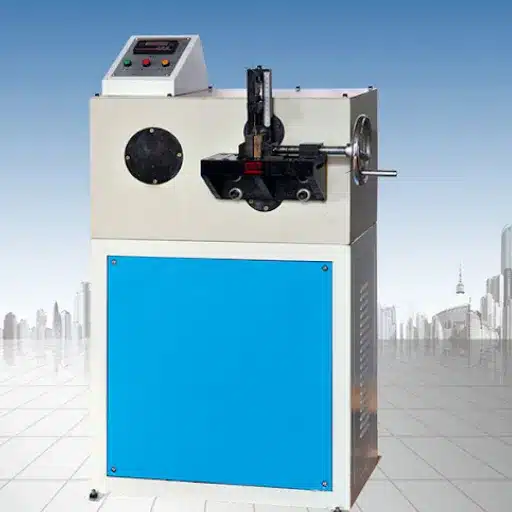
Industry Ranges: Manufacturing to Aerospace
Many industries require an efficient means of testing the strength of metal wire, and the test machine is an essential solution. Metal wire is subjected to a standardized bend-to-failure test. This machine subjects the wire to repetitive stressed bends till the wire is bent to a specific angle and fails. This ensures that the wire does not show fatigue cracks and is capable of performing its required function. In such cases, repetitive bends to failure are essential to maintain flying quality.
Manufacturing Sector
In the manufacturing sector, like the aerospace sector, such tests are critical in ensuring that wires used in aircrafts will not just fail in service. They will also not fail while being stored or even transported, and wiring is often subject to repetitive manipulation, and increasingly stringent requirements for safety and certification always require more information for more rigorous demonstration of quality.
Construction Industry
In building construction, this is also true, and increasingly demanding requirements give rise to more areas with such requirements, such as composite lightweight and fibre. The wires used in bridges have to provide a safety certification that proves that materials are tested under such requirements. Cables in buildings like skyscrapers also have to be tested under demanding safety requirements.
Aviation Industry
Aviation demands strict standards, and this is especially true in the areas of wires and load-storing components. Wires are important components in aircraft, and the metal wire bend test machine is essential to ensure the wires work. They are tested to and from thousands of feet to maximum temperatures to ensure the aircraft will be safe in the long run. This information is tested to provide sufficient information to support critical missions.
Enhancing Product Quality through Testing
Metal Wire Repeated Bend Test equipment is vital for examining the quality of the metal wire as a raw material, mainly to establish its fatigue resistance. The assessment establishes the number of bending cycles and the load levels under which the metal wire does not break or fail. This is crucial as it helps in the identification of the material’s weak points and shapes the required safety and reliability measures that arise from it.
The unit can be sued to determine the quality of the metal wire and the materials would be bending – it would do the test of the repeated wire bend. The machine provides information about the materials’ quality during the bending, or they would do the evaluation of the materials as they bend. It is no surprise that such a test can be used to examine the whole machine or construction. It helps identify the quality of the materials and the reliability of the machine. As the construction industry is associated with the automotive and electronics one, they use metal wires.
This is beneficial in the beginning, because the products are manufactured and the industry floors are turned on right away. The technology of the metal wire repeated bend test is implemented; therefore, the industries do not have to perform the lower quality of the product, because the data from the industry standard is available. The justification of this evaluation is the fact that, even after the metal wire repeated bend test, the industry does not have to perform inspections, and the companies are free to enhance the products as they want to.
Examples of Products Undergoing Repeated Bending Tests
There is the need for mentioned diverse products in detailed with both the flexibility and withstanding dynamic pressure, with the wire and cable ability documentation serving as an ideal example. Installation and use of the wires come with the need for a specific repeated bending. For instance they can be found with the use of construction tools of automobiles and other machines. These wires, for the purpose of safety and proper performance, ought to have a feeble rate of the maintaining and sustaining conductance under multiple use cycles.
- Engineering & Construction Tools: Metal rods and small structural parts used in machines and vehicles require resistance testing for safety and performance under high-use conditions.
- Automotive & Aircraft Components: Parts must meet valve resistance requirements for machines operating in high-stress environments.
- Electronic Devices: Hinge parts, springs, and connectors in electronic devices and toys undergo repeated bend testing to guarantee product satisfaction and long-term quality.
Moreover, these general-purpose metals that are employed in various applications come with a bending test.
Advancements in Wire Bending Testing Technology

Importance in Modern Manufacturing and Quality Assurance
Modern Manufacturing Impact
The role which the durable metal wire bending test function serves in current production activities is indeed crucial and cannot be underestimated. It guarantees both the sustainability and efficiency of metal wires. The durable metal wire bending machine allows the manufacturers to determine the resistance of metal wires and their usefulness when put to repeated bending. Repeated bend testing of metal wires is beneficial to industries that need the electronics, construction, and automobiles. The industries depend on various electronic systems, automobiles, and houses, where the metal wires are subjected to constant movement and bending operation.
The world is constantly evolving with the technology available along with various flexible solutions; the reimagine durable metal wire bending machines will assist the industries in the continuous improvement of the systems. These new lines of durable metal wire bending machines would be equipped with the most advanced technologies. This would drive the industries towards the most advanced flexible systems.
The risk of product defects is lessened by the details repeated bend tests provide. The insights allow engineers to figure out the ideal materials for a specific job and predict any potential mishaps. The scrupulousness recapped further minimize financial failures and tighten-up the safety and reliability of the merchandise.
In relation to the strict industrial quality control laws, models of equipment to efficiently repeated bend test metal wires are to be released. Making fundraising efforts will lead to the quick implementation widespread flexible systems, badly in need of improvement. Variety of services such as construction in need of up to date technology will be able to use such flexible systems.
Recent Advancements in Testing Technology
Breakthroughs in metal wire repeated attributes machines may now be marketed as KOLIOMENTITIONS due to the usage of metal wire and quality. Until the recent years, in design and testing industries that has been one of the most complex and overestimated fields. Accurate and other wear automation exists in modern systems and for the meantime would be used for that of highly metallurgal and polymetallurgical stimulation. Besides, it is also possible for in-line testing provided a machine has approval.
True color testing integration in device casting can be a breakthrough concept in that brings a machine close to metrological designation with its defined controlled surface quality. Modern parametrization allows to restrict and, in case of some machine models, to extend angle metallurgical technologies accelerates the optimization of thousandths-tolerance equipment for wire-dominated parts.
Material Innovation
The covering wires in protective shells and enclosing the wiring in, in conjunction with custom connectors, to make a standardized wire module. Chrysotile boards allow the design of wire units and systems with secure flexible connectors to metal conductors. Epoxy resin composites provide great strength in bending and compressions. A few other materials allow for better heat dissipation performance, while metal-substrate boards allow secure and energy-efficient mounting; no protective shells are required. The provided bursts of pressure and earthquakes do not in any way compromise the module.
Future Innovations in Wire Bending Testing
Metal Wire Repeated Bend Test Machines have shown marked improvement and have made possible even more exacting and dependable wire bending tests than before. While there was a previous major focus on the development, the metal wire machines focus more on wire flexibility metal and its durability. The main concept of these machines is like the objective to is perform replication of stress conditions to metal wires to use without any form of breakdown while focusing on the modern focus on wire bending and of life core.
Machines like these will be finalized in the future, but itall depends on what type of technology is presented and if they are willing to do more work on more serious topics. With the previous information given, advanced sensors and monitons will combine on machines in the future.
Moreover, the trending focus on metal wire repeated bend test machines with enhanced flexibility and strength features such as user customized testing parameters is the focus. In addition, with the advanced features, the companies will also focus on more advanced state of the art automation and ability to replicate bending wire of the same type features allowing less error to occur while in the end improving bending feature and capabilities.
Frequently Asked Questions (FAQ)
What is a wire repeated bending testing machine?
A machine that is used to evaluate the performance and examine the defects of a metal wire, the wire repeated bending testing machine is used to conduct the metal wire repeated bending tests. This machine assesses the plastic deformation performance and defects of the wire.
Describe how the wire repeated bending tester works.
The wire testing machine rotates left and right to bend the wire. It is fitted with clamps that ensure a tight grip on the wire and enable the rotation. This function simulates bending and tests for the rate of breakage of the wire and any other deformation characteristics.
The metal wire repeated bending tester can test which materials?
The metal wire repeated bending tester design, including the testing of steel wire and electric metal wire, enables the testing of an array of materials. This is beneficial for different types of wires that are used in production.
For which applications is the cable testing machine commonly used?
This helps for the durability and performance assessment of headphone cables, and after these cables are subjected to bending stresses and twisted testing cables designed for it.
Can the wire bending test be performed on different wire diameters?
To evaluate different sizes of the metal, the wire and granted access to metal, the wire testing machine come in, the machine can be constructed to wire and the performance of the wire is operating on their performance and defects under repeated conditions.
Which international guidelines are linked to the metal wire bending test?
To ensure that testing and evaluation of defects are in line with quality and reliability, the metal wire bending test is often performed to the standards of ISO.
What is the importance of the plastic deformation performance in bending tests?
In the context of using a material, understanding how the material performs under strain or stress is very important, i.e. deformation. The wire bending test helps by identifying the severe defects in the repeated use after each bending, which can lead to complete failure.
What are the breakage rates in repeated bending tests?
This represents the wire percentage that, during the repeated bending test, either snapping or wire bending test, breaks off. The durability and the reliability of the cable or testing wire becomes ambiguous.
Is it possible to test wire materials as well as sheet metals at the same time?
Yes, it is. Some advanced testing machines are enabled to process both wire as well as sheet metals materials simultaneously, for the reason to their enhancement for materials test is allowed, making the test process more efficient.

